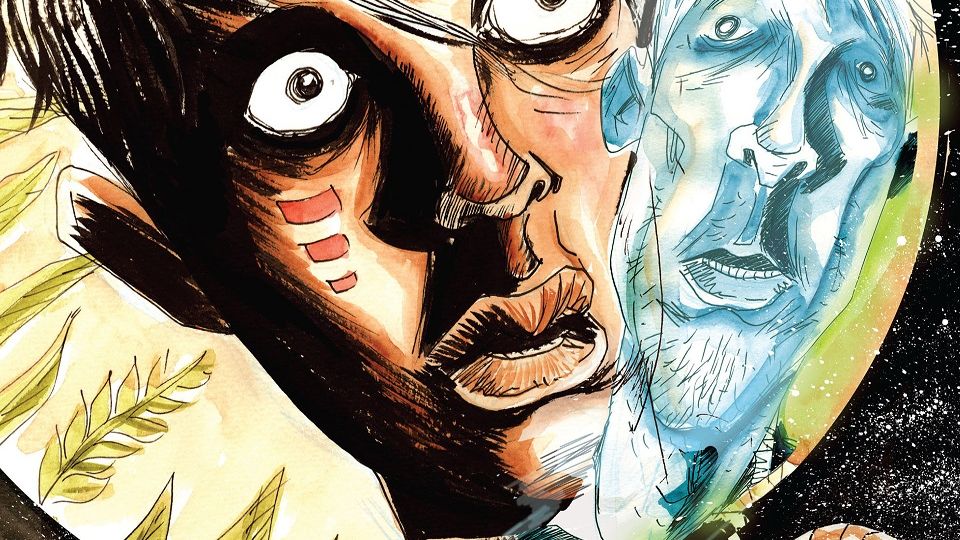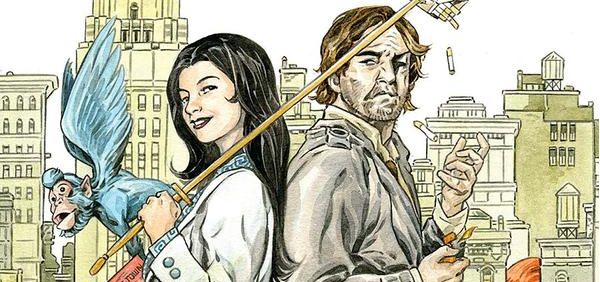
Sometimes it’s a damn shame that blockbuster spectacles with no substance masked by increasingly poor stylistic choices get more coverage than truly moving films built on substance with extremely well developed characters and plots. Don’t get me wrong, I adore the hell out of The Avengers but there is no way it can top something as impeccably crafted and developed as The Master, even though Joss Whedon makes it one of the smarter superhero films in recent years. The Master surpasses it in just about every way though, even though the both of them are two different classes of film. Nevertheless, the sentiment remains the same. People will spend their hard earned dollars on the latest gritty action flick filled with 2 hours of recycled fight sequences and staged situations over something that just surpasses the medium.
I often feel the same way about the comic book medium. Don’t get me wrong: I unironically enjoy the latest events from either side (I find both Infinity and Forever Evil to be really fun and well-done, even though they have a myriad of problems about them) but something like Trillium deserves far more coverage and media attention than the latest gimmicky crossover event with “long-lasting repercussions and dark revelations” (seriously how many times do both DC and Marvel repeat those phrases in press releases? I swear there’s a formula to these things). Green Arrow may be my current favorite ongoing book, but Lemire’s other book is objectively (sort of) better in terms of craft, substance and storytelling.
Trillium, at its core, is a love story told across time with some science fiction trappings here and there. In issue number two (of eight), we as readers already get development towards the romance the two leads are going to build. One’s from the year 3797 and one’s from 1921, and they both meet at temple entrance that doubles as a nexus across time. Lemire plays this up as both a brilliant way to subvert the trope of two people from different places in miscommunication with each other and as a scene for slightly comedic effect (I laughed a little, but mostly at how clever his setup was. Clever things make me giggle). Rather than have them violently build up to an understanding like a superhero story would, the scene is rather used as a situation to build dialogue and communication between the two leads, and lead them to each other through attempts to actively do such. They try out many methods of understanding, via crude art in rock, listing off the names of years, etc. Eventually they both ingest the title flower of the new name that somehow shares their thoughts with each other. It’s a great way to subvert the tropes that could’ve been, and it establishes that these explorers are non-violent people.
Lemire builds an artsy story through genre trappings (I use artsy in the best of meanings) that allow him to vehemently turn everything topsy-turvy. Characters break orders not because they’re loose cannon hot-shots, but because of logistical reasons and an understanding of alien cultures. A lot of what I see in this issue (and series so far) is a theme of “breaking down the barrier”. Often times, as a nation, the United States of America will willingly bring themselves to violence with a myriad of countries in the middle east that often seems to stem from miscommunication and cultural misunderstanding. What Trillium is saying is that we need to break these barriers down and develop a healthy love and trust with each other, lest we destroy ourselves and each other’s worlds. It’s a powerful statement and a strong idea that doesn’t get thrown around too often in the world of today’s politics.
The art style Lemire chooses is one that it seems simple on the surface but reveals intricate layers in the details, just like the story. It seems evocative of a children’s story at first, but the art is truly constructed for those who appreciate the medium more than anything. Lemire’s use of watercolors gives the pages a surrealistic feel, something rooted in abstract-isms with an aged, folksy quality and a down-to-earth vibe built in the foundations of the penciling. There’s just something thought-provoking about a comic that just draws from different elements of art, rather than the stagnation the medium has been having lately of pencils, inks, colorings, and lettering. The watercolors mixed with the pencils and the inks make it feel like a wholly unique experience rather than just another comic. Praise goes to Lemire for not dumbing down his craft to fit the rest of everything else.
Vertigo, I think, has been on a streak of revivalism as of late, with a slew of new series coming out and some mini (maxi-?)-series being released at a steady pace. Trillium is part of this revivalist streak, and is ushering in a new era of stories not just for Vertigo itself, but for the medium as a whole. Now if only something like this could get more press than say, X-Men crossover number one billion.















